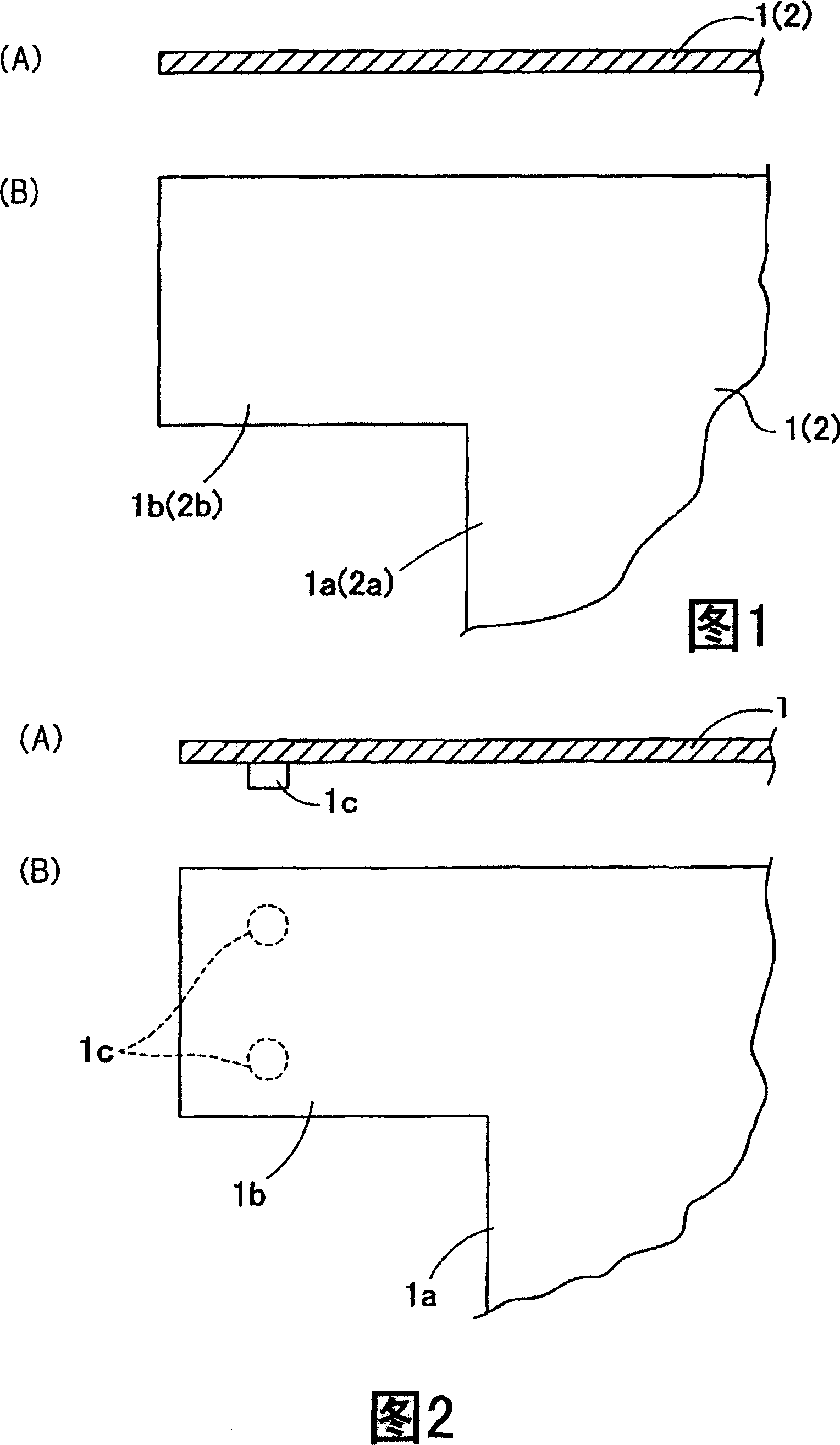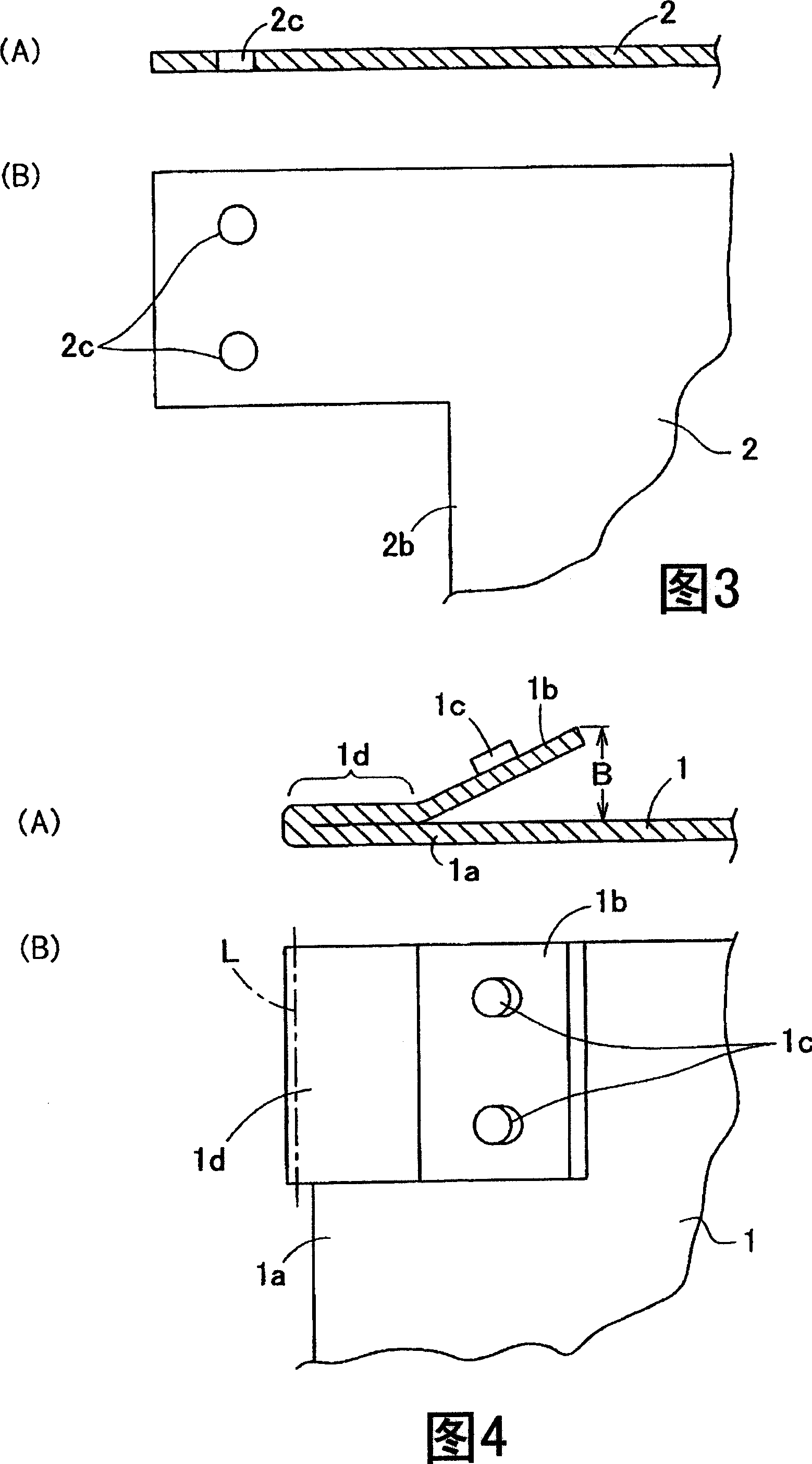Panel bonding method and panel combination component
A joining method and plate technology, which is applied in the direction of thin plate connection, connecting components, mechanical equipment, etc., can solve the problems of shallow engagement of convex and concave parts, shaking, easy damage of the engaging part, etc., and achieve the effect of simple joint operation
- Summary
- Abstract
- Description
- Claims
- Application Information
AI Technical Summary
Problems solved by technology
Method used
Image
Examples
Embodiment Construction
[0032] The plate joining method of the present invention will be described with reference to the accompanying drawings. Here, as shown in FIG. 1 , two metal plates 1 and 2 of the same shape in which protrusions 1 b and 2 b as curved pieces are integrally formed with bases 1 a and 2 a are joined so that both bases 1 a and 2 a The case of mutual overlap is described as an example. For convenience of description, among the two metal plates, one plate 1 is referred to as a "first plate", and the other plate 2 is referred to as a "second plate".
[0033] First, as shown in FIG. 2 , a dowel 1c is formed in the vicinity of the front end of the protruding piece 1b of the first plate material 1 . The dowel 1c may be formed by welding, or may be formed by press working. In the illustration, dowels 1c are formed at two positions equidistant from the edge of the protruding piece 1b. Moreover, in the protruding piece 2b of the 2nd board|plate material 2, as shown in FIG. For reasons de...
PUM
 Login to View More
Login to View More Abstract
Description
Claims
Application Information
 Login to View More
Login to View More - R&D
- Intellectual Property
- Life Sciences
- Materials
- Tech Scout
- Unparalleled Data Quality
- Higher Quality Content
- 60% Fewer Hallucinations
Browse by: Latest US Patents, China's latest patents, Technical Efficacy Thesaurus, Application Domain, Technology Topic, Popular Technical Reports.
© 2025 PatSnap. All rights reserved.Legal|Privacy policy|Modern Slavery Act Transparency Statement|Sitemap|About US| Contact US: help@patsnap.com



